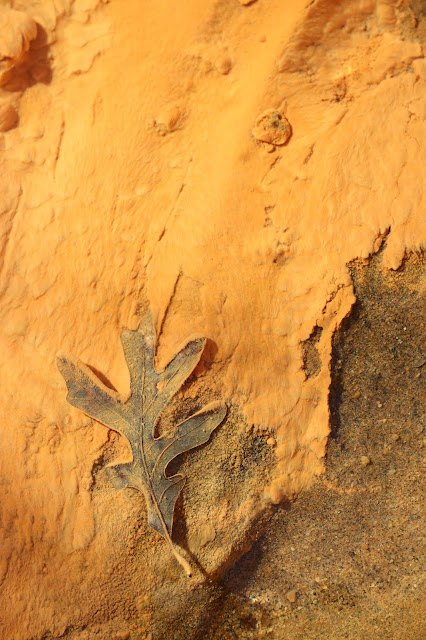A Tale of a Concretion: The Pioneering Bivalve That Hitchhiked Into Fresh Water
I was out in central PA last week and the week before, looking for Devonian fish that were swimming up freshwater creeks, along with anything else that fossilized in those ancient waterways. The matrix is fine-grained silt that preserved details wonderfully and where nothing was trapped either preserved as the muddy bottom of the creek or else no texture at all.
Imagine my puzzlement when I started finding rounded, swirly ovate lumps of this shale lying about, and even more puzzlement when I found one with spine-like protrusions. My first inclination was that it was a concretion around a fish skeleton, but my gut told me not to do anything other than stabilize it until I had an expert look at it.
Fortunately, the Museum of the Earth at the Paleontological Research Institute was on my itinerary between dusty days of field work. I asked at the prep lab if there was anyone on staff who was familiar with the freshwater Devonian of PA. More luck! Both the interns knew the site where I found it. They are actively doing fieldwork there. I fetched the rock from the car and showed it to them in the ten minutes they had before they had to dash out of the building. 

What I and most anyone else would have chalked up to a geologic anomaly in the local rock was, in fact, a trace fossil from a clam. And the weird luck just keeps on going because these two gentlemen and their supervisor are currently working on a paper about Devonian trace fossils, including ones like this. This was the best-preserved example they have seen. It showed details they could only hypothesize about with the broken examples they had.
This is from a pioneering fresh-water mussel that partially burrowed into the mud. It was the first bivalve to move into fresh water.. Invertebrates had a particularly hard time moving into fresh water not only because of the salinity, but because the floating larva couldn't move against the unidirectional flow of rivers and streams. Archanodon solved the latter problem during the Devonian by spending part of its life cycle attached to fish and hitching a ride upstream. After they matured more, they dropped off wherever they happen to be and settled into the substrate for the rest of their lives.
They asked me what I planned to do with it. I told them I’d keep it in my private collection and use it for outreaches like my annual library display. Then the question behind the question sank in and I added, “Unless you want it?” Minutes later we were inside the lab, taking quick pictures of my as-yet unphotographed find, jotting down my contact information, site location and (yes I am that methodical) GPS coordinates. I handed the rock over to them and they whisked it to the collection department for their project. No prep necessary!
I am much more inclined to donate anything of scientific value than to hoard it in my cabinets, especially something that just looks like a lump of clay. However, I missed this particular prize almost instantly. Mollusk person that I am, it was a bit like handing over a dinosaur jaw. I knew it belonged at PRI, but…
Wouldn’t you know, a few days later I was back in the freshwater Devonian and found four more, including one that was in almost as good condition (see the photos with white backgrounds). The second one will stay with me for the time being. It will get shown off at my library display and the club shows in the months to come. What can I say? Mollusks call to me.





Comments
Post a Comment